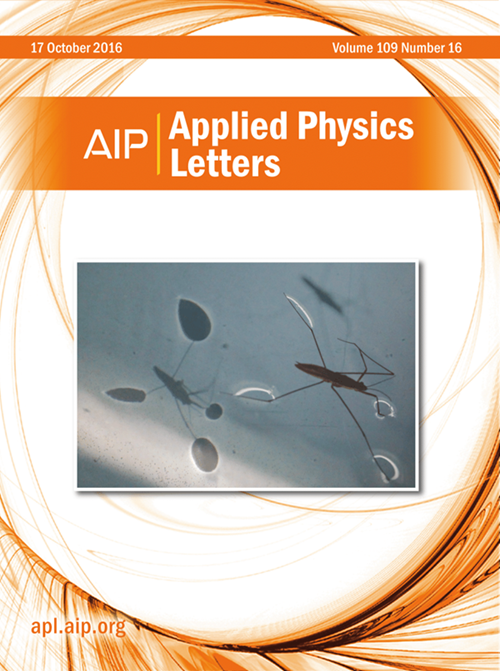采用单扩散工艺制备的高性能室温InP/InGaAs单光子探测器
IF 3.6
2区 物理与天体物理
Q2 PHYSICS, APPLIED
引用次数: 0
摘要
传统的InP/InGaAs单光子雪崩探测器需要冷却到大约240 K以减少暗计数,这就需要使用半导体热电冷却,这增加了体积和功耗。通过优化材料结构和单扩散工艺,我们开发了一种室温(293 K)下工作的高性能1550 nm单光子探测器。在检测效率为20.1%的情况下,实现的暗计数率为6.82 kHz,后脉冲概率为0.15%,门控操作下的时序抖动为120 ps。这是迄今为止报道的在室温下工作的1550 nm单光子探测器的最低暗计数率。此外,在纯被动淬火模式下,我们通过溅射工艺将SiO2/Cr薄膜电阻集成到检测器中,在室温下获得了32.6 kHz的暗计数率和10.3%的检测效率。我们的方案为室温单光子探测器提供了另一种选择,并将显著推进其在紧凑、低功耗设备中的应用。本文章由计算机程序翻译,如有差异,请以英文原文为准。
High-performance room temperature InP/InGaAs single-photon detector made by a single diffusion process
Traditional InP/InGaAs single-photon avalanche detectors require cooling to approximately 240 K to reduce dark counts, necessitating the use of semiconductor thermoelectric cooling, which increases both volume and power consumption. Through optimization of the material structure and fabrication processes via a single diffusion process, we have developed a high-performance 1550 nm single-photon detector that operates at room temperature (293 K). At a detection efficiency of 20.1%, the dark count rate achieved was 6.82 kHz, with an afterpulse probability of 0.15% and a timing jitter of 120 ps under gated operation. This is the lowest dark count rate reported to date for a 1550 nm single-photon detector operating at room temperature. Furthermore, in a purely passive quenching mode, we obtained a dark count rate of 32.6 kHz with a detection efficiency of 10.3% at room temperature by integrating a SiO2/Cr film resistor through a sputtering process into the detector. Our scheme provides an alternative choice for room-temperature single-photon detectors and should significantly advance their application in compact, low-power devices.
求助全文
通过发布文献求助,成功后即可免费获取论文全文。
去求助
来源期刊

Applied Physics Letters
物理-物理:应用
CiteScore
6.40
自引率
10.00%
发文量
1821
审稿时长
1.6 months
期刊介绍:
Applied Physics Letters (APL) features concise, up-to-date reports on significant new findings in applied physics. Emphasizing rapid dissemination of key data and new physical insights, APL offers prompt publication of new experimental and theoretical papers reporting applications of physics phenomena to all branches of science, engineering, and modern technology.
In addition to regular articles, the journal also publishes invited Fast Track, Perspectives, and in-depth Editorials which report on cutting-edge areas in applied physics.
APL Perspectives are forward-looking invited letters which highlight recent developments or discoveries. Emphasis is placed on very recent developments, potentially disruptive technologies, open questions and possible solutions. They also include a mini-roadmap detailing where the community should direct efforts in order for the phenomena to be viable for application and the challenges associated with meeting that performance threshold. Perspectives are characterized by personal viewpoints and opinions of recognized experts in the field.
Fast Track articles are invited original research articles that report results that are particularly novel and important or provide a significant advancement in an emerging field. Because of the urgency and scientific importance of the work, the peer review process is accelerated. If, during the review process, it becomes apparent that the paper does not meet the Fast Track criterion, it is returned to a normal track.
 求助内容:
求助内容: 应助结果提醒方式:
应助结果提醒方式:


